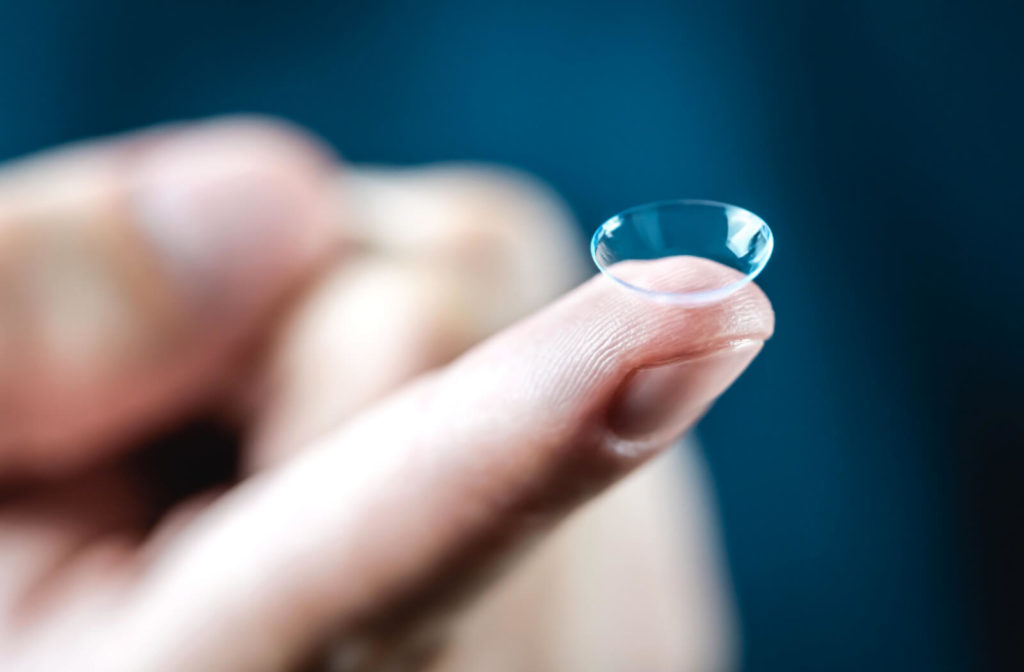When it comes to vision correction, contact lenses have become an incredible solution for people looking to avoid traditional eyeglasses. But contacts can be so much more than just a simple lens. With a few adjustments, they can be used to correct various vision problems—like presbyopia.
Multifocal contact lenses contain multiple prescriptions in one lens—one corrects distance vision, while the other corrects nearby vision. They essentially do the same job as progressive glasses.
Several types of multifocal contacts are available that work in slightly different ways. To know which type best suits your eyes and vision, you’ll need to visit your optometrist for a contact lens fitting and comprehensive eye exam.
What Are Multifocal Contacts?
Traditional contact lenses use a single prescription to correct a single refractive error. Whether you have myopia (nearsightedness), hyperopia (farsightedness), or astigmatism, contact lenses change how light enters your eye to give you clear vision.
Because traditional lenses only contain a single prescription, they’re less than ideal for those with more than one refractive error. But multifocal lenses are the answer.
Similar to multifocal eyeglass lenses, multifocal contacts are designed with different zones of vision. These zones include areas for up-close, intermediate, and distance vision. How multifocal contacts function vary based on the lens type and how these zones are positioned on the lens.
When you wear multifocal or progressive glasses, adjusting your head or eye direction lets you use a specific zone in the lens for the desired vision. It’s a bit different with multifocal contacts—the lenses move in sync with your eyes, so merely tilting your head or aiming your gaze won’t have the same effect.
Multifocal contacts work alongside the natural behavior of your pupils. As you focus on distant objects, your pupils slightly enlarge, and they constrict when you shift your attention to nearby things, like reading. The visual zones of multifocal contacts are designed to match these subtle changes in pupil size. This alignment lets your eyes naturally focus on objects at different distances, whether near or far.
So, if you need one prescription to read a book, but another to drive, multifocal contacts will allow you to see both clearly without changing your glasses or contacts.
The Different Types of Multifocals
While multifocal contact lenses can be an excellent solution for various vision issues, they don’t follow a one-size-fits-all approach. Optometrists may suggest different styles based on your needs, as each style comes with its own advantages. The types include:
- Simultaneous (concentric) vision lenses use a series of rings with varying prescriptions that allow you to simultaneously see clearly at different distances. Though there is a short adjustment period, the brain automatically selects the proper ring needed for clear vision.
- Translated (segmented) lenses are often referred to as alternative vision lenses. Rather than using rings, these lenses have a clear line between the zones for nearby and distant vision. With these lenses, you can look down to focus on nearby objects and look up to see at a distance.
- Aspheric lenses gradually transition between zones, allowing a natural shift between nearby and distant vision.
The Benefits of Multifocals
For a long time, using reading or bifocal glasses was the primary approach to correcting presbyopia—a refractive error that makes it difficult to see things up close. However, this could be bothersome and impractical. Multifocal contacts present a more convenient alternative, providing clear vision at all distances without needing multiple pairs of glasses. They also bring several benefits:
- Comfortable alternative: Multifocal contacts eliminate the discomfort of wearing glasses.
- Seamless transition: These contacts offer a smooth shift effortlessly from near to far vision.
- Freedom in various settings: They allow you to navigate situations where wearing glasses might be inconvenient, such as work, sports, or exercise.
- Unobstructed peripheral vision: Multifocal contacts ensure your side vision remains clear and unhampered.
How to Choose Your Multifocals
When thinking about multifocal contacts for your vision problems, there’s one place to start: a visit to your optometrist. They can perform a comprehensive eye exam and a contact lens fitting to help you find the lenses that will work best for you.
At The Eye Gallery, we know how frustrating it can be to be unable to see the world clearly. Our experienced eye care professionals are here to help you with your vision needs. Book an appointment with us today, and get the care your eyes deserve!




